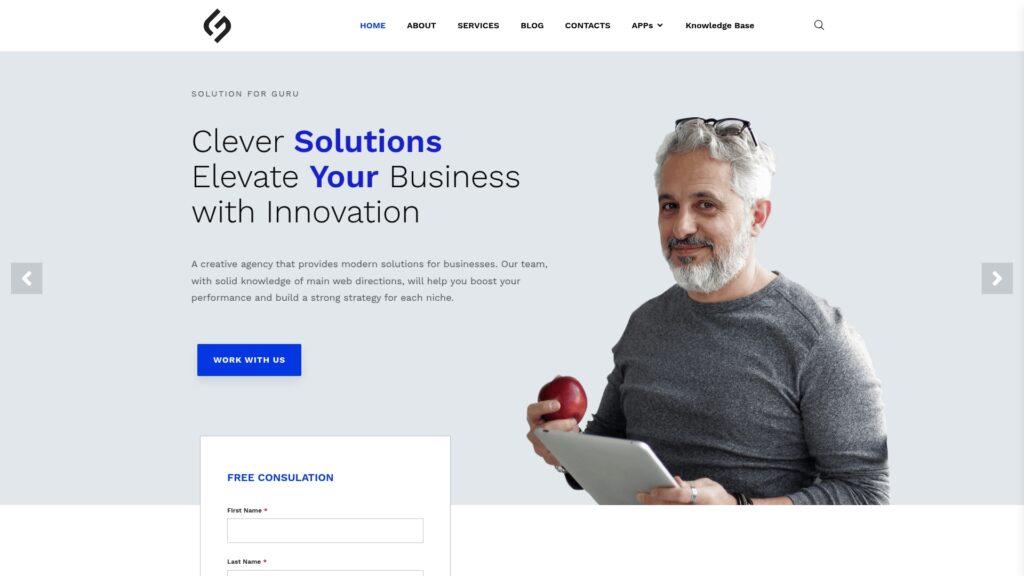Top Ways to Save Money on Your Auto Insurance Premiums

Auto insurance represents one of the most significant recurring expenses for vehicle owners, with the average American driver spending over $1,500 annually on coverage. However, many drivers unknowingly overpay for their policies, missing numerous opportunities to reduce premiums without sacrificing essential protection. Understanding the various strategies to lower insurance costs empowers you to keep more money in your pocket while maintaining the coverage you need to protect yourself, your passengers, and your assets on the road.
Table of Contents
- Quick Summary
- What Does Saving Money on Your Auto Insurance Really Mean?
- How Can Shopping Around and Comparing Quotes Save You Money?
- What Discounts Are Available and How Do You Qualify for Them?
- Multi-Policy or Bundling Discounts
- Safe Driver Discounts
- Defensive Driving Course Discounts
- Good Student Discounts
- Low Mileage and Usage-Based Discounts
- Vehicle Safety Feature Discounts
- Loyalty and Continuous Coverage Discounts
- Professional and Affinity Group Discounts
- Payment and Policy Structure Discounts
- What Role Does Your Vehicle Choice Play in Insurance Costs?
- What Annual Review Strategies Help Maintain Low Insurance Costs?
- Conclusions
- Frequently Asked Questions
- Benefits of Cooperation with Solution for Guru Company
Quick Summary
Saving money on auto insurance involves implementing multiple strategic approaches that collectively reduce your premiums while maintaining adequate protection. Key strategies include regularly comparing quotes from multiple insurers like Progressive, BiBerk, Infinity Auto, and Next Auto Insurance; maximizing available discounts such as multi-policy, safe driver, and defensive driving course credits; adjusting deductibles to balance out-of-pocket costs with premium savings; and leveraging usage-based insurance programs that reward safe driving behaviors. Additionally, maintaining good credit, choosing vehicles with favorable insurance ratings, bundling policies, and conducting annual coverage reviews ensure you consistently receive the best possible rates. By combining these approaches, most drivers can reduce their insurance costs by 20-40% without compromising essential coverage, potentially saving hundreds or even thousands of dollars annually.
What Does Saving Money on Your Auto Insurance Really Mean?
Saving money on auto insurance extends far beyond simply finding the cheapest policy available. Rather, it involves strategically optimizing your coverage to balance adequate protection against financial exposure with reasonable premium costs. True insurance savings means paying the lowest possible rate for the coverage you actually need while avoiding both over-insurance that wastes money and under-insurance that leaves you vulnerable to catastrophic financial consequences.
Many drivers mistakenly equate lower premiums with better value, purchasing minimal coverage that meets only state-mandated requirements. However, this approach often proves penny-wise and pound-foolish, as inadequate coverage can result in devastating out-of-pocket expenses following accidents. Conversely, some drivers maintain unnecessarily comprehensive coverage on older vehicles worth less than their annual deductibles, effectively paying for protection that provides no meaningful financial benefit.
The intelligent approach to insurance savings recognizes that your optimal coverage level and cost evolves throughout your life. When purchasing a new vehicle, comprehensive and collision coverage protect your significant investment. However, as vehicles age and depreciate, maintaining expensive comprehensive coverage on a car worth $3,000 makes little financial sense if you’re paying $800 annually for that protection. Similarly, young drivers might benefit from higher liability limits despite increased costs, as they face greater accident risk and potentially more severe financial consequences from lawsuits.
Factors and tariffs
Furthermore, saving money on insurance involves understanding the various levers that influence your premiums. Insurance companies evaluate dozens of factors when calculating rates, including your driving record, credit history, age, location, vehicle type, annual mileage, coverage selections, and deductible levels. Each factor presents potential opportunities for optimization. By systematically addressing multiple factors, you can achieve cumulative savings that substantially reduce your insurance burden without compromising protection.
Insurance providers
Major insurance providers approach pricing and discounts differently, creating opportunities for comparison shopping. Progressive has built its reputation on competitive pricing and extensive discount programs, offering savings for everything from bundling policies to maintaining continuous coverage. The company’s online tools make it easy to customize coverage and see how various options affect premiums in real-time. BiBerk focuses primarily on small business and commercial insurance, helping entrepreneurs reduce vehicle insurance costs while accessing comprehensive business coverage packages. Their approach emphasizes efficiency and value for business owners managing multiple vehicles or seeking integrated insurance solutions.
Infinity Auto Insurance specializes in serving diverse communities and drivers who may face challenges accessing affordable coverage through traditional insurers. The company offers flexible payment options, multilingual support, and works with drivers across various credit and driving history profiles, providing opportunities for savings even when other insurers quote prohibitively high rates. Next Auto Insurance US represents a new generation of digital-first insurers, leveraging technology to streamline operations and pass savings to customers through lower overhead costs. Their platform emphasizes transparency, allowing customers to understand exactly what they’re paying for and make informed decisions about coverage options.
Ultimately, saving money on auto insurance means taking an active, informed role in managing your coverage. It requires periodic reviews of your policies, staying informed about available discounts, maintaining good driving habits, and recognizing when switching insurers or adjusting coverage makes financial sense. The drivers who achieve the greatest savings treat insurance not as a static obligation but as a dynamic aspect of their financial planning that deserves regular attention and optimization.
How Can Shopping Around and Comparing Quotes Save You Money?

One of the single most effective strategies for reducing auto insurance costs involves regularly comparing quotes from multiple insurance companies. Industry research consistently shows that identical drivers with the same coverage can receive quotes varying by hundreds or even thousands of dollars annually, depending on the insurer. This dramatic price variation reflects different underwriting philosophies, risk assessment methodologies, and competitive strategies among insurance companies.
Insurance companies specialize in different market segments and target specific customer profiles. Some insurers focus on preferred customers with excellent driving records and high credit scores, offering them deeply discounted rates while charging higher premiums to higher-risk drivers. Other companies, like Infinity Auto Insurance, specifically serve drivers with imperfect records or unique circumstances, offering competitive rates to customers who might face exorbitant premiums elsewhere. Consequently, your ideal insurer depends entirely on your individual risk profile and circumstances.
The comparison shopping process
The comparison shopping process has become remarkably straightforward thanks to digital tools and online quote systems. Most insurers, including Progressive and Next Auto Insurance US, offer instant online quotes requiring only basic information about your driving history, vehicle, and desired coverage. Within minutes, you can obtain preliminary quotes from multiple companies, identifying which insurers offer the most competitive rates for your specific situation. However, while online quotes provide useful starting points, speaking directly with insurance agents often reveals additional discounts or coverage options not apparent through automated systems.
When comparing quotes, ensure you’re evaluating equivalent coverage levels across all insurers. A $900 annual premium with minimal liability limits and high deductibles isn’t comparable to a $1,200 premium with comprehensive protection and reasonable deductibles. Create a standardized coverage specification including liability limits, collision and comprehensive deductibles, uninsured motorist protection, and any additional coverages you require. Then request quotes based on these identical specifications, ensuring valid apples-to-apples comparisons.
Timing significantly impacts quote results, as insurance rates fluctuate based on market conditions, claims experience, and competitive pressures. Shopping for insurance 30-45 days before your renewal date provides optimal timing, allowing you to compare rates while maintaining continuous coverage. Additionally, some insurers offer better rates for policies beginning on specific days or during promotional periods, creating opportunities for strategic timing of policy changes.
Cooperation with independent insurance agents
Furthermore, consider working with independent insurance agents who represent multiple companies simultaneously. These agents can efficiently compare rates across their entire portfolio of insurers, identifying the best options without requiring you to contact each company individually. Independent agents often have access to regional or specialty insurers not available through direct channels, expanding your options beyond nationally advertised brands. BiBerk frequently works through independent agents specializing in business insurance, providing small business owners with comprehensive coverage comparisons.
Don’t overlook smaller regional insurers when comparison shopping. While national brands like Progressive dominate advertising and market share, regional companies often offer excellent rates and service quality. These insurers typically maintain lower overhead costs by avoiding expensive national marketing campaigns, passing savings to policyholders through competitive premiums. Additionally, regional insurers frequently provide superior customer service through local agents with deep community connections and genuine interest in client relationships.
The comparison shopping process shouldn’t end after finding a better rate and switching insurers. Instead, establish a routine of obtaining comparison quotes annually, even if you’re satisfied with your current insurer. Insurance companies regularly adjust their rating formulas, competitive positioning, and target markets. An insurer offering excellent rates this year might become uncompetitive next year, while a company that previously quoted high premiums might suddenly offer attractive rates. By consistently shopping around, you ensure you’re always receiving competitive pricing regardless of market shifts.
Moreover, when you receive competitive quotes from other insurers, contact your current company and inquire about matching or beating those rates. Many insurers, recognizing the high cost of customer acquisition, prefer retaining existing customers by offering competitive pricing rather than losing them to competitors. This negotiation strategy often succeeds with established companies like Progressive that value long-term customer relationships and maintain flexibility in their pricing structures.
What Discounts Are Available and How Do You Qualify for Them?
Auto insurance companies offer dozens of potential discounts, yet most drivers claim only a fraction of available savings. Understanding the full range of discount opportunities and proactively ensuring you receive every discount you qualify for can reduce your premiums by 20-40% or more. However, insurers rarely automatically apply all eligible discounts, making it essential that you specifically request and verify each applicable reduction.
Multi-Policy or Bundling Discounts
Bundling your auto insurance with homeowners, renters, or other insurance policies with the same company typically generates substantial savings, often 15-25% on auto premiums. Insurance companies highly value customers who consolidate multiple policies, as it increases customer lifetime value and reduces the likelihood of customers switching providers. Progressive aggressively promotes bundling discounts, offering attractive rates when customers combine auto insurance with home, renters, boat, RV, or motorcycle coverage. The convenience of managing all policies through a single provider and making one consolidated payment adds additional value beyond pure cost savings.
Safe Driver Discounts
Maintaining a clean driving record for three to five years typically qualifies you for safe driver discounts ranging from 10-30%. These discounts reward drivers who avoid accidents, traffic violations, and insurance claims, recognizing that past behavior strongly predicts future risk. Some insurers offer tiered safe driver discounts, with savings increasing for each additional year without incidents. If you’ve recently had an accident or violation, understand when it will age off your record (typically three to five years), at which point you should verify your insurer applies the safe driver discount. Next Auto Insurance US provides transparent tracking of safe driving periods through their digital platform, helping customers understand exactly when they’ll qualify for increased discounts.
Defensive Driving Course Discounts
Completing an approved defensive driving or accident prevention course can reduce premiums by 5-15%, with discounts typically lasting three years before requiring course recertification. These courses, often available online for under $50, teach advanced driving techniques, hazard recognition, and accident avoidance strategies. The modest time and cost investment typically pays for itself many times over through insurance savings. Additionally, some states mandate that insurers offer defensive driving discounts, while others leave it to company discretion. Infinity Auto Insurance works extensively with customers to identify defensive driving opportunities, particularly for drivers seeking to improve their rates after incidents or violations.
Good Student Discounts
Young drivers on family policies who maintain a B average or better (typically 3.0 GPA or higher) usually qualify for good student discounts of 10-25%. These discounts recognize that academic achievement correlates with responsible behavior and lower accident risk. Students must typically provide report cards or transcripts as documentation and reverify eligibility each semester or annually. Some insurers extend good student discounts through age 25, while others limit them to high school and undergraduate students. Progressive offers particularly generous good student discounts and accepts various forms of academic achievement verification.
Low Mileage and Usage-Based Discounts
Drivers traveling fewer than 7,500-10,000 miles annually typically qualify for low mileage discounts, as reduced road exposure directly decreases accident probability. Additionally, usage-based insurance programs that monitor actual driving behavior through telematics devices or smartphone apps offer potential savings of 10-40% for safe drivers. These programs track factors like hard braking, rapid acceleration, time of day, and total mileage, rewarding drivers who demonstrate consistently safe habits. BiBerk offers usage-based programs particularly beneficial for small business vehicles where owners can document reduced business travel or seasonal operation patterns.
Vehicle Safety Feature Discounts
Cars equipped with anti-lock brakes, electronic stability control, forward collision warning, automatic emergency braking, and other advanced safety features often qualify for discounts of 5-20%. Modern vehicles with comprehensive safety packages can generate substantial savings through these technology discounts. When purchasing a new vehicle, factor these potential insurance discounts into your total cost of ownership calculations. Additionally, installing aftermarket security devices like alarm systems or GPS tracking may qualify for anti-theft discounts, though you should verify with your insurer before investing in such equipment.
Loyalty and Continuous Coverage Discounts
Maintaining continuous insurance coverage without lapses demonstrates responsibility and typically qualifies you for discounts of 5-15%. Some insurers also reward customer loyalty, increasing discounts for each year you remain with the company. However, loyalty discounts sometimes fail to keep pace with competitive market rates, making it essential to periodically compare quotes despite your tenure with a current insurer. Next Auto Insurance US emphasizes transparent pricing that rewards good drivers rather than simply time with the company, ensuring customers receive fair rates regardless of how recently they joined.
Professional and Affinity Group Discounts
Many insurers offer discounts to members of professional associations, alumni groups, employers, or other affinity organizations. These partnerships provide 5-15% discounts to group members, reflecting reduced marketing costs and often favorable risk characteristics of group members. Ask your insurer about available affinity discounts and verify your eligibility for any professional or organizational discounts. Additionally, some employers negotiate group insurance rates, potentially offering better pricing than individual policies.
Payment and Policy Structure Discounts
Paying your premium in full annually rather than monthly installments typically saves 5-10% by avoiding financing fees and processing costs. Additionally, enrolling in automatic electronic funds transfer for payment processing often qualifies for small additional discounts. While paying annually requires larger upfront costs, the savings usually justify this approach if your budget permits. Furthermore, paperless billing and electronic document delivery sometimes generate modest discounts while reducing environmental impact.
The key to maximizing discount savings involves proactively reviewing all available discounts with your insurer annually and immediately after life changes that might create new discount eligibility. Got married? You likely qualify for a married discount. Teen driver graduated college? They may now qualify for even larger good student discounts or young adult safe driver rates. Paid off your car loan? You might reduce coverage and costs. Progressive, BiBerk, Infinity Auto, and Next Auto Insurance US all offer comprehensive discount programs, but eligibility and amounts vary significantly. Therefore, discuss your specific situation with each company when comparison shopping to ensure you’re receiving every discount you deserve.
What Role Does Your Vehicle Choice Play in Insurance Costs?

The vehicle you drive dramatically impacts your insurance premiums, with costs varying by hundreds or even thousands of dollars annually between different makes and models. Understanding how vehicles are rated for insurance purposes and factoring insurance costs into vehicle purchase decisions can generate substantial long-term savings while ensuring you select a car that fits your budget holistically.
Insurance companies evaluate vehicles based on numerous factors when establishing rates. Repair costs represent a primary consideration, as vehicles requiring expensive parts or specialized labor to repair following accidents result in higher insurance claims. Luxury vehicles and certain European imports often carry premium insurance costs due to expensive parts and limited repair shop availability. Conversely, common domestic vehicles and popular Japanese models typically cost less to insure thanks to readily available parts, competitive repair markets, and lower labor requirements.
Impact of car characteristics
Vehicle safety ratings and crash test performance significantly influence insurance costs as well. Cars earning top safety ratings from the Insurance Institute for Highway Safety (IIHS) and National Highway Traffic Safety Administration (NHTSA) typically receive better insurance rates than poorly rated vehicles. Advanced safety features like automatic emergency braking, lane departure warning, blind spot monitoring, and adaptive cruise control reduce accident frequency and severity, translating directly to lower insurance claims and premiums. When comparing vehicles, research safety ratings and inquire about insurance cost differences before making purchase decisions.
Additionally, theft rates for specific makes and models substantially impact comprehensive insurance premiums. Vehicles frequently targeted by thieves—certain Honda and Toyota models, pickup trucks, and luxury SUVs—face elevated comprehensive coverage costs reflecting increased theft risk. The National Insurance Crime Bureau publishes annual lists of most frequently stolen vehicles, providing valuable insights for car shoppers concerned about insurance costs. Installing aftermarket anti-theft devices on high-risk vehicles may qualify for insurance discounts that partially offset elevated theft-related premiums.
Performance characteristics influence insurance pricing as well, with high-horsepower sports cars and performance vehicles commanding premium insurance rates. These vehicles attract aggressive drivers, enable dangerous speeds, and historically correlate with elevated accident rates. Consequently, insurance for sports cars often costs 50-100% more than equivalent coverage for sedans or family vehicles with similar values. Progressive and other insurers maintain sophisticated databases correlating specific vehicles with claims experience, accident rates, and repair costs, using this historical data to price current policies accurately.
Vehicle value
Vehicle value directly affects comprehensive and collision coverage costs, as these coverages protect against vehicle damage or loss. Newer, more expensive vehicles require higher premiums to reflect their replacement costs, while older, depreciated vehicles cost substantially less to insure. This relationship creates an important decision point for owners of aging vehicles: at what point does the combination of decreasing vehicle value and increasing premiums make comprehensive and collision coverage economically irrational? Many experts suggest dropping these coverages when vehicle value falls below 10 times the annual premium cost for these coverages.
When shopping for vehicles with insurance costs in mind, obtain insurance quotes before finalizing purchases. Most insurers, including Next Auto Insurance US, provide instant online quotes for specific vehicles by VIN number, allowing you to compare insurance costs across your shortlist of potential purchases. You might discover that the vehicle you assumed would be most affordable to insure actually carries premium costs, while an overlooked alternative offers surprisingly low rates. These insurance cost differences can substantially affect total cost of ownership calculations.
| Vehicle Type | Average Annual Insurance | Factors Driving Costs | Best For |
|---|---|---|---|
| Sedans (Mid-size) | $1,200-1,600 | Balanced safety, repair costs | Budget-conscious families |
| SUVs (Mid-size) | $1,400-1,900 | Higher repair costs, theft risk | Families needing space |
| Sports Cars | $2,200-3,500 | Performance risk, expensive repairs | Performance enthusiasts |
| Pickup Trucks | $1,500-2,200 | Theft risk, varied use cases | Business/recreational use |
| Economy Cars | $1,100-1,400 | Lower values, good safety | Cost-conscious drivers |
Furthermore, vehicle age and ownership status influence insurance decisions and costs. Newer vehicles financed through loans typically require comprehensive and collision coverage to protect the lender’s interest. However, once you pay off the loan, you gain flexibility to adjust coverage based on vehicle value and your risk tolerance. Similarly, leased vehicles require comprehensive coverage per lease agreements, limiting your ability to reduce insurance costs through coverage reductions.
What Annual Review Strategies Help Maintain Low Insurance Costs?
Implementing systematic annual insurance reviews ensures you consistently maintain optimal coverage at competitive prices, adapting to changing circumstances while capitalizing on new discount opportunities or improved market rates. Most drivers set their insurance policies and then neglect them for years, missing numerous opportunities for optimization and savings. Conversely, drivers who treat insurance as a dynamic aspect of their financial management achieve substantially better long-term results.
Scheduling Regular Review Periods
Establish a specific annual date for comprehensive insurance review, ideally 30-45 days before your policy renewal. This timing allows sufficient time to shop for competitive quotes, make coverage adjustments, and potentially switch insurers before your current policy expires, avoiding coverage gaps or rushed decisions. Consider aligning your insurance review with other annual financial planning activities like tax preparation or retirement account contributions, creating comprehensive financial review routines.
During annual reviews, systematically evaluate whether life changes over the past year affect your insurance needs or discount eligibility. Major life events that should trigger insurance reviews include:
- Marriage or divorce
- Birth or adoption of children
- Children reaching driving age or going to college
- Home purchases or relocations
- Vehicle purchases or disposals
- Career changes or retirement
- Significant income changes
- Credit score improvements
Each of these events potentially creates new discount opportunities, changes your coverage needs, or affects your risk profile in ways that should prompt insurance adjustments.
Obtaining Competitive Quotes
Even if you’re satisfied with your current insurer, obtain at least three competitive quotes annually from other providers including Progressive, BiBerk, Infinity Auto, or Next Auto Insurance US. Insurance markets remain highly competitive with constantly shifting pricing strategies as companies adjust their target customer profiles and risk appetites. An insurer offering excellent rates last year might have increased prices this year, while a company you previously found uncompetitive might now offer attractive rates.
When obtaining comparison quotes, ensure you’re requesting identical coverage specifications across all insurers to enable valid comparisons. Create a standardized coverage document listing your desired liability limits, deductibles, and additional coverages, then request quotes based on these exact specifications. This discipline prevents confusion about whether lower quotes reflect genuinely better pricing or simply reduced coverage.
Verifying All Applicable Discounts
Insurance companies rarely proactively notify you about new discount eligibility, placing the responsibility on policyholders to request applicable discounts. During your annual review, systematically verify you’re receiving every discount you qualify for, including:
- Multi-policy/bundling discounts
- Safe driver discounts
- Defensive driving course completion
- Good student discounts for young drivers
- Low mileage or usage-based discounts
- Vehicle safety feature discounts
- Loyalty or continuous coverage discounts
- Professional or affinity group memberships
- Automatic payment or paperless billing discounts
Progressive maintains comprehensive discount programs and provides online tools allowing customers to verify discount eligibility and estimate savings from various discounts. However, even with these tools, proactively discussing your situation with an agent often reveals additional savings opportunities not apparent through automated systems.
Reassessing Coverage Adequacy
Your insurance needs evolve over time as your financial situation, assets, and risk tolerance change. During annual reviews, honestly evaluate whether your current coverage remains appropriate or requires adjustment. Questions to consider include:
- Have your assets increased to a level requiring higher liability limits or umbrella coverage?
- Have vehicles depreciated to the point where comprehensive and collision coverage no longer makes economic sense?
- Has your emergency fund grown sufficiently to justify higher deductibles?
- Have teenage drivers matured and improved their records, qualifying for young adult discounts?
- Has your commute changed, affecting your mileage and potentially your premiums?
BiBerk emphasizes regular review cycles for business clients, recognizing that commercial operations evolve rapidly with fleet expansions, business growth, or operational changes requiring insurance adjustments. The company’s consultative approach helps business owners anticipate insurance needs proactively rather than discovering coverage gaps after incidents occur.
Documenting Your Review Process
Maintain records of your annual insurance reviews including quotes obtained, coverage comparisons, and decisions made. This documentation helps you track trends in your insurance costs over time, understand how various life changes affected your premiums, and make more informed decisions in future review cycles. Additionally, documentation proves valuable when disputing claims or addressing billing issues, providing clear records of your coverage selections and interactions with insurers.
Considering Market Timing
Insurance markets experience cyclical pricing trends based on industry-wide claims experience, investment returns, and competitive dynamics. During soft markets with increasing competition and lower rates, shopping around typically yields better results. Conversely, during hard markets with elevated claims costs and reduced capacity, maintaining relationships with current insurers often proves more valuable than chasing marginal rate differences. While individual drivers cannot perfectly time insurance markets, staying generally aware of industry trends helps contextualize rate changes and timing for potential insurer switches.
Infinity Auto Insurance works closely with customers throughout their policy tenures, proactively reaching out when life changes might create new opportunities for savings or when market conditions make it advisable to review coverage. This relationship-focused approach helps customers maintain optimal coverage without requiring them to independently manage every aspect of their insurance optimization.
Next Auto Insurance US leverages its digital platform to facilitate continuous policy optimization rather than limiting reviews to annual renewal cycles. The company’s app provides alerts when driving improvements or life changes might create savings opportunities, enabling more dynamic policy management that responds quickly to changing circumstances. This modern approach aligns insurance management with other aspects of digital financial management, making optimization more convenient and accessible.
Conclusions
Reducing auto insurance premiums requires a comprehensive, strategic approach that addresses multiple factors simultaneously while maintaining adequate protection for your financial security. Throughout this examination, we’ve explored numerous proven strategies for lowering insurance costs, from fundamental approaches like comparison shopping and maximizing discounts to sophisticated techniques involving usage-based insurance, credit optimization, and strategic coverage adjustments. The cumulative effect of implementing multiple strategies often produces savings of 30-50% or more compared to passive insurance management.
Progressive

Progressive stands out as an industry leader in providing innovative tools, extensive discount programs, and usage-based insurance options that reward safe driving. The company’s Snapshot program has successfully demonstrated that technology-enabled insurance pricing benefits both insurers and customers by more accurately aligning premiums with actual risk. Progressive’s comprehensive online platforms empower customers to understand their coverage, compare options, and optimize their policies with unprecedented transparency. For drivers seeking reliable insurance from an established provider with proven savings opportunities, Progressive represents an excellent choice deserving serious consideration during comparison shopping.
BiBerk

BiBerk serves a specialized but critical market segment by helping small business owners and entrepreneurs secure affordable commercial auto insurance while accessing comprehensive business coverage. The company’s consultative approach goes beyond simple policy sales, providing genuine partnership in risk management and operational improvement. For small business owners operating vehicle fleets or requiring commercial auto coverage, BiBerk’s integrated solutions and personalized service deliver exceptional value. The company’s willingness to work with newer businesses and those with developing insurance histories makes them particularly valuable for entrepreneurs who might struggle accessing coverage through traditional commercial insurers.
Infinity Auto Insurance

Infinity Auto Insurance demonstrates that insurance innovation and inclusivity need not be mutually exclusive. By serving diverse communities and providing multilingual support, flexible payment options, and pathways to affordable coverage for drivers with various backgrounds and circumstances, Infinity Auto expands insurance access to populations often underserved by the industry. The company’s educational focus and personalized customer service help drivers understand insurance fundamentals, optimize their coverage, and build positive insurance histories that translate to improving rates over time. For drivers who have faced challenges with traditional insurers or value personalized service and community focus, Infinity Auto offers compelling alternatives.
Next Auto Insurance

Next Auto Insurance US represents the future of insurance distribution and management, leveraging digital technology to streamline processes, reduce overhead costs, and provide superior customer experiences. The company’s integrated usage-based pricing, transparent rating algorithms, real-time policy adjustments, and engaging mobile interfaces appeal to tech-savvy consumers who expect premium digital experiences across all service categories. Next Auto Insurance US proves that insurance can transition from an opaque, frustrating necessity to an engaging, transparent service that customers actively manage and optimize. For drivers comfortable with digital platforms and seeking modern insurance experiences, Next Auto Insurance US delivers innovation and value that traditional insurers struggle to match.
Regardless of which provider you ultimately select, the fundamental principles of insurance cost management remain consistent across the industry. Regular comparison shopping ensures you’re receiving competitive rates as markets and company strategies evolve. Maximizing applicable discounts rewards your safe driving, life circumstances, and loyalty with premium reductions that accumulate substantially over time. Strategic deductible selection balances affordable premiums against manageable out-of-pocket risk. Maintaining excellent credit demonstrates financial responsibility that insurers reward with better rates. Choosing vehicles thoughtfully with insurance costs in mind prevents surprises and optimizes total ownership costs.
By thoughtfully applying the strategies outlined throughout this article and partnering with reputable insurers like Progressive, BiBerk, Infinity Auto, or Next Auto Insurance US, you can achieve substantial insurance savings while maintaining the protection you need for peace of mind and financial security. The time invested in insurance optimization delivers exceptional returns, potentially saving thousands of dollars annually while ensuring your coverage evolves appropriately with your changing life and needs.
Frequently Asked Questions
Financial experts recommend obtaining comparison quotes from multiple insurance providers at least annually, ideally 30-45 days before your policy renewal date. This frequency ensures you remain aware of market rates and competitive offerings while providing sufficient time to switch insurers if you discover better pricing elsewhere. Additionally, you should request new quotes whenever major life changes occur that might affect your insurance rates, such as marriage, divorce, moving to a new location, purchasing a new vehicle, or experiencing significant credit score improvements. Insurance markets remain highly dynamic with companies constantly adjusting their pricing strategies, target customer profiles, and competitive positioning. An insurer offering excellent rates this year might become uncompetitive next year, while a company you previously found expensive might suddenly offer attractive pricing.
Yes, paying your auto insurance premium in full annually rather than through monthly installments typically saves 5-10% by avoiding financing fees and installment processing charges that insurers add to monthly payment plans. While the terminology varies by insurer—some call these “installment fees,” others “processing charges” or “convenience fees”—the economic reality remains that monthly payment plans cost more than annual payment in full. For example, if your annual premium is $1,200, paying monthly might result in 12 payments of $105 ($1,260 total), representing $60 in additional costs for the convenience of monthly installments. Over decades of insurance purchasing, these fees accumulate to thousands of dollars in unnecessary expenses. However, the annual payment strategy requires maintaining sufficient liquidity to pay large premium bills when due, typically at policy initiation and each annual renewal.
Benefits of Cooperation with Solution for Guru Company
Navigating the complex landscape of auto insurance savings requires expertise, market knowledge, and ongoing attention that many busy drivers struggle to maintain consistently. This is where partnering with Solution for Guru (https://www.solution4guru.com/) delivers exceptional value, providing professional insurance consultation and optimization services that help you maximize savings while ensuring adequate protection for your unique circumstances.

By partnering with Solution for Guru, you gain access to professional insurance expertise typically available only to large corporations and high-net-worth individuals, democratizing access to sophisticated insurance optimization services. Whether you’re a first-time insurance buyer seeking foundational guidance, a family managing multiple vehicles and drivers, or a business owner requiring commercial coverage, Solution for Guru delivers customized solutions that maximize your insurance value while minimizing your costs and time investment.
Visit https://www.solution4guru.com/ today to discover how their expertise can transform your insurance experience, delivering substantial savings while ensuring you maintain optimal protection for your financial security and peace of mind. Additionally, maintaining good credit, choosing vehicles with favorable insurance ratings, bundling policies, and conducting annual coverage reviews ensure you consistently receive the best possible rates. By combining these approaches, most drivers can reduce their insurance costs by 20-40% without compromising essential coverage, potentially saving hundreds or even thousands of dollars annually.
Recommended
- What Are the Best Auto Insurance Options for Rideshare Drivers (Uber, Lyft, etc.)?
- How to Get Affordable Auto Insurance After an Accident or Ticket
- Auto and Renters Insurance Bundle
- Preferred Auto Insurance Companies
- How to Get Auto Insurance Online
- Auto Insurance for Farms
- Auto International Insurance
- Comparing Commercial Auto Insurance
- The Top Commercial Auto Insurance Options



